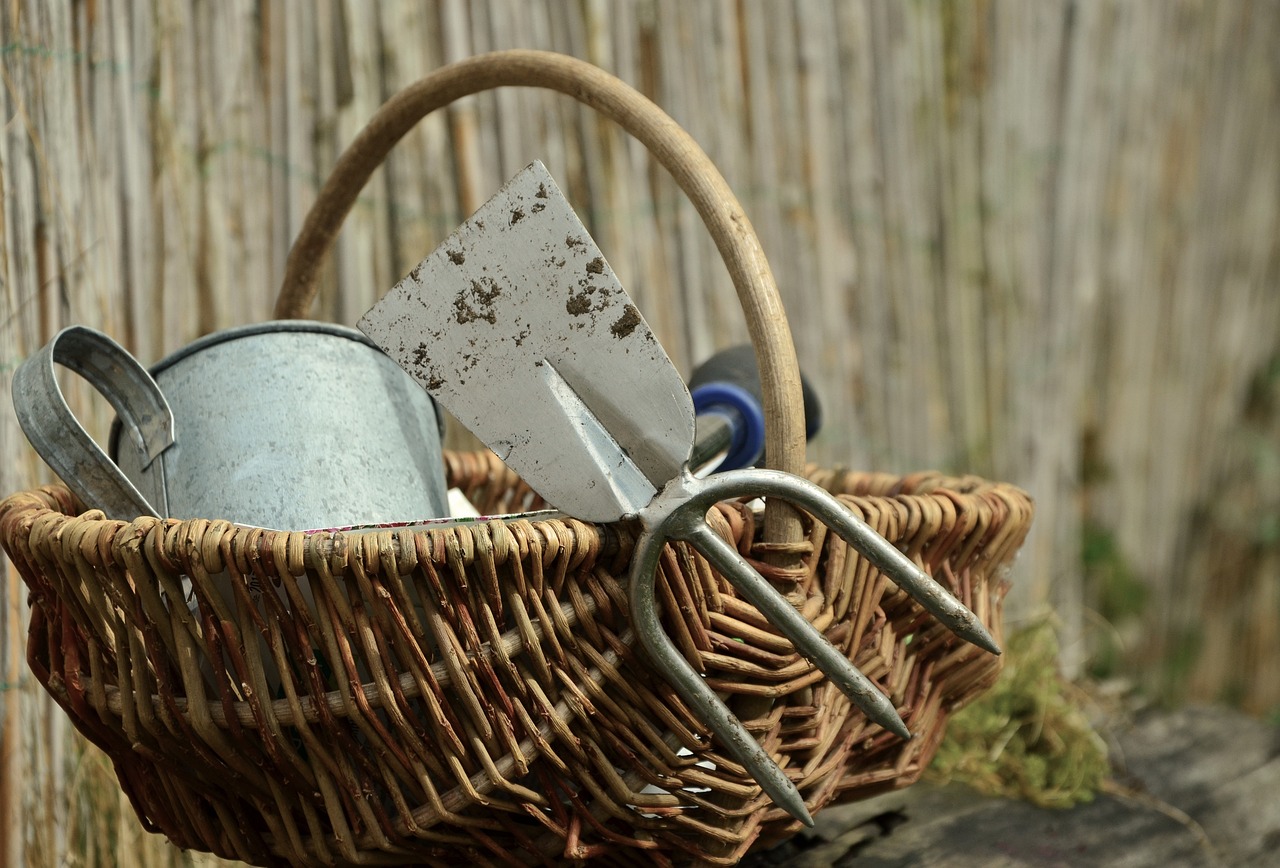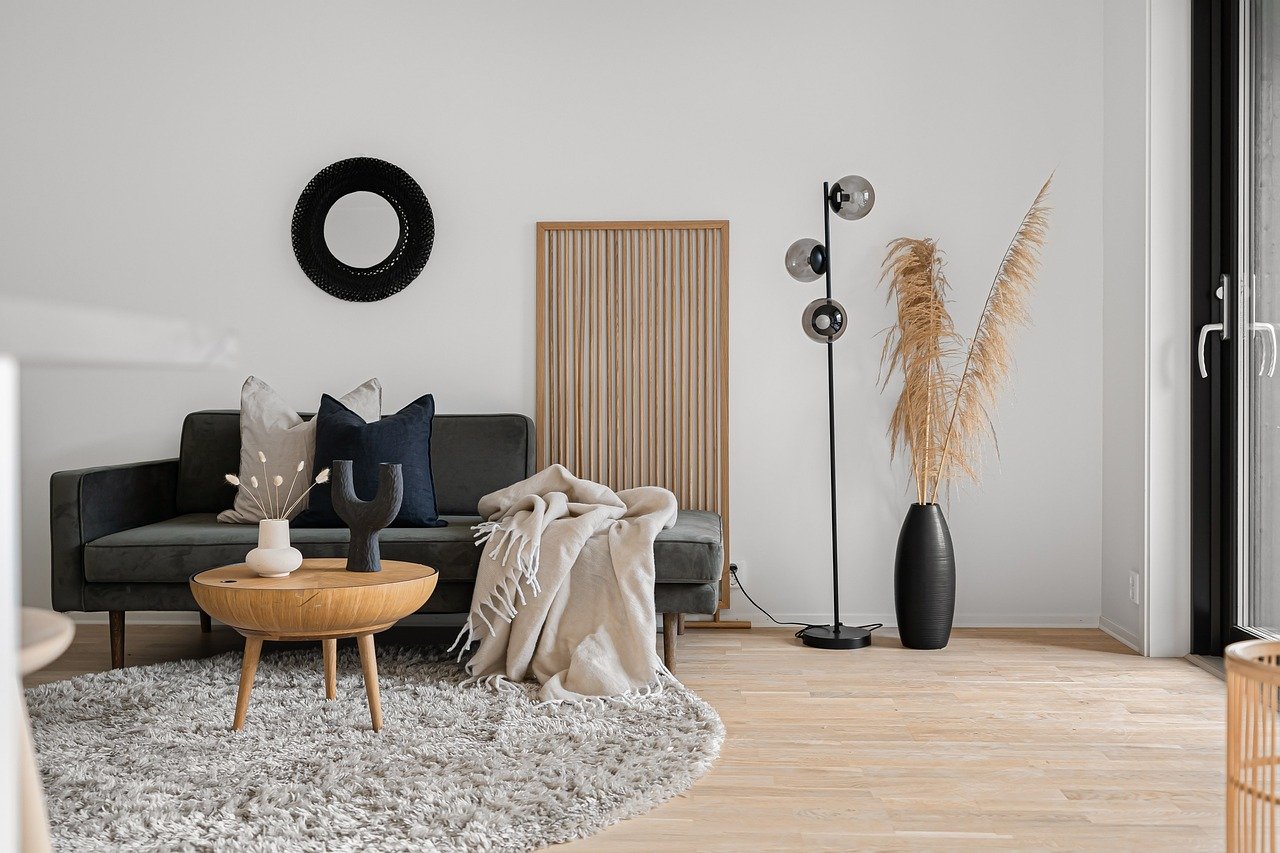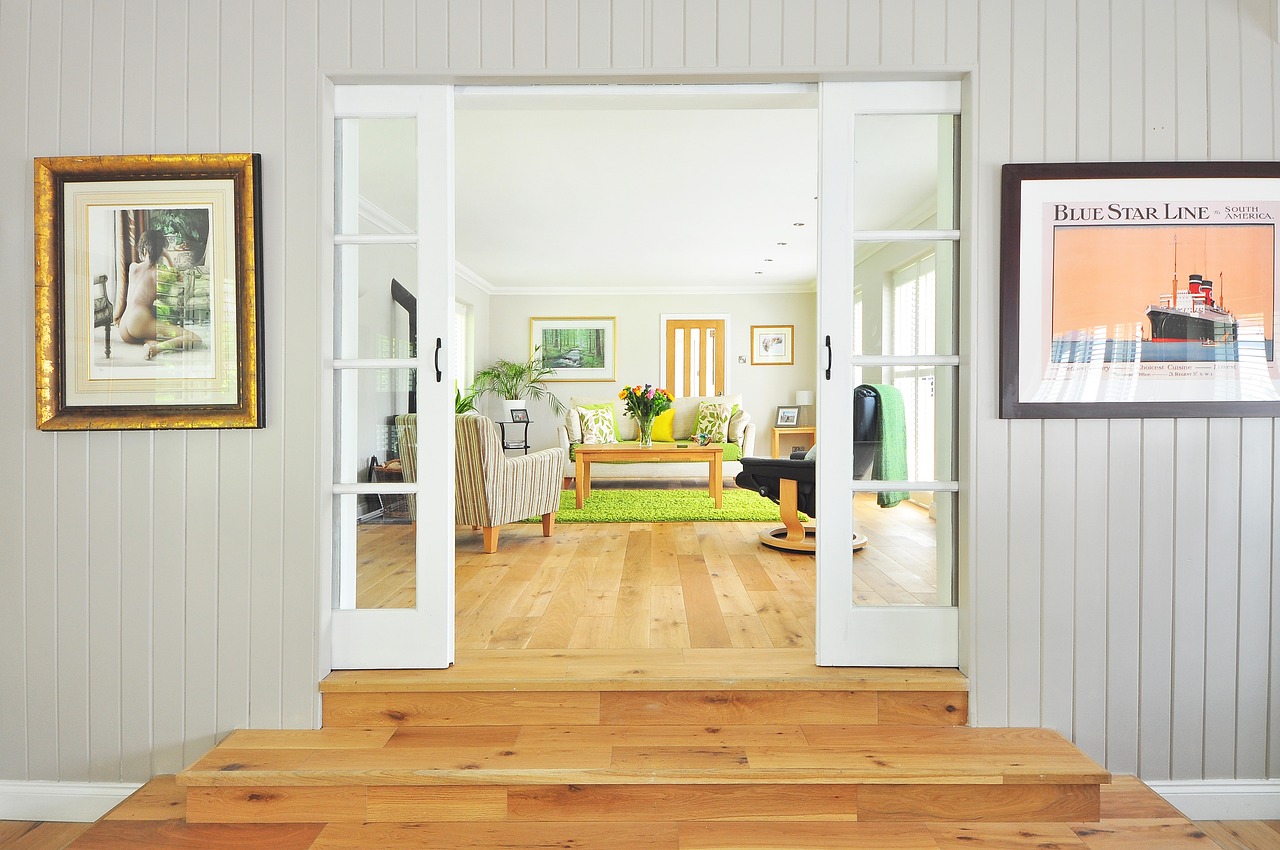Setting Up Your First Quilting Room: A Guide
Welcome to the exciting world of quilting! If you're here, you're probably ready to dive into this creative hobby, and setting up your first quilting room is the perfect first step. Think of your quilting room as your personal sanctuary, a space where creativity flows and ideas come to life. This guide provides essential tips and insights for creating an efficient and inspiring quilting space. From layout to tools, discover how to optimize your quilting room for creativity and productivity. So, let’s roll up those sleeves and get started on crafting a space that not only meets your needs but also ignites your passion for quilting!
Selecting the ideal location for your quilting room is crucial. Imagine walking into a room bathed in natural light, where you can feel the energy of creativity buzzing around you. Consider factors like natural light, accessibility, and noise levels to create a comfortable and inviting environment for your creative projects. A room with large windows can brighten your day and enhance your mood, while a quiet corner away from distractions can help you focus on your intricate designs. Don’t forget to think about the flow of the space; you want to be able to move around easily, grabbing your tools and materials without feeling cramped.
A well-equipped quilting room requires specific tools and supplies. Think of your tools as the paintbrushes of your artistic endeavor; the right ones can make all the difference. Explore the must-have items, from cutting mats to sewing machines, that will enhance your quilting experience and ensure efficiency. Investing in quality tools will not only save you time but also improve the quality of your work. Here’s a quick rundown of essential items you might want to consider:
- Cutting Tools: Rotary cutters, rulers, and scissors are fundamental for accurate quilting.
- Sewing Machines: A reliable sewing machine is the heart of any quilting room.
- Fabrics: A variety of fabrics in different colors and patterns will inspire you.
Cutting tools are fundamental for accurate quilting. You wouldn’t want to paint without a proper brush, right? Learn about rotary cutters, rulers, and scissors that will help you achieve clean edges and precise measurements in your fabric pieces. Each tool has its unique purpose, and understanding their differences can significantly enhance your quilting skills.
Rotary cutters are essential for quick and accurate fabric cutting. They’re like your best friend in the quilting world! Discover tips on selecting the right rotary cutter for your quilting needs and how to maintain it for optimal performance. A good rotary cutter can make the difference between a smooth project and a frustrating one, so choose wisely!
High-quality fabric scissors are crucial for detailed work. Understand the importance of choosing the right scissors and how to care for them to ensure they last and perform well. Just like a chef needs a sharp knife, you need scissors that can handle the intricacies of your fabric. Remember, dull scissors can lead to frayed edges and messy cuts, which is the last thing you want in your beautiful quilts!
A reliable sewing machine is the heart of any quilting room. It’s your workhorse, your partner in creativity! Explore different types of sewing machines, their features, and how to choose one that fits your quilting style and needs. Whether you’re a beginner or a seasoned pro, finding the right machine can elevate your quilting game to new heights.
Effective organization maximizes your quilting room's functionality. Think of your space as a well-oiled machine; everything needs to be in its right place for it to run smoothly. Learn strategies to arrange your tools, fabrics, and workspace to create an efficient workflow and minimize clutter. An organized space not only saves time but also sparks creativity.
Storage solutions play a vital role in maintaining order. Imagine opening a cabinet and everything is neatly arranged, just waiting for you to dive in! Discover various options for storing fabrics, threads, and tools, ensuring everything is easily accessible when you need it. From bins to shelves, the right storage can keep your space looking tidy and inspire you to create.
Your workstation setup can significantly impact your quilting experience. Arrange your sewing machine, cutting area, and ironing station for optimal efficiency and comfort. Consider the flow of your movements; you want to be able to transition from cutting to sewing to ironing without feeling like you’re on a scavenger hunt for tools.
A comfortable atmosphere fosters creativity and focus. Imagine a space where you can lose yourself for hours, surrounded by colors and textures that inspire you. Learn how to enhance your quilting room with lighting, seating, and decor that inspire and motivate you during your quilting sessions. The right atmosphere can make your quilting experience not just productive but also enjoyable.
Proper lighting is essential for detailed work. Explore various lighting options that can brighten your quilting space and reduce eye strain. Whether it’s natural light streaming in or well-placed lamps, good lighting transforms your room into a welcoming haven for creativity.
Choosing the right seating is crucial for comfort during long quilting sessions. Discover ergonomic chair options that provide support and promote good posture while you work on your projects. After all, you want to be comfortable while you create masterpieces!
Adding personal touches to your quilting room makes it uniquely yours. Think of it as decorating a canvas; your personality should shine through! Explore creative ways to display your finished quilts, inspirational quotes, and favorite fabrics to create a space that reflects your personality. Personal touches not only make the space feel cozy but also inspire you every time you step inside.
Incorporating decorative elements enhances the aesthetics of your quilting room. Learn how to choose colors, patterns, and decor that inspire you and create a welcoming environment. A splash of color here, a charming quote there—these little details can make a big difference in your creative space.
Showcasing your completed quilts adds a personal touch. Discover creative ways to display your work, turning your quilting room into a gallery that celebrates your achievements. Imagine walking into your space and being greeted by the beautiful pieces you’ve created; it’s not just a room; it’s a reflection of your journey as a quilter!
Regular maintenance is key to keeping your quilting room functional and inspiring. Just like any creative space, it requires a little TLC to stay in top shape. Explore cleaning tips, organization strategies, and ways to refresh your space to ensure it remains a productive haven. A well-maintained room can help you feel motivated and ready to tackle your next project.
Establishing a regular cleaning routine helps maintain an organized quilting space. Learn effective cleaning strategies that keep your tools and fabrics in top condition while minimizing dust and clutter. A clean space can do wonders for your creativity and focus!
Keeping your supplies updated is essential for efficiency. Explore how to assess your inventory regularly, ensuring you have the necessary tools and materials for your quilting projects. Out with the old and in with the new—this can keep your quilting experience fresh and exciting!
Q: What are the essential tools I need to start quilting?
A: Some essential tools include a rotary cutter, cutting mat, fabric scissors, a sewing machine, and various quilting fabrics.
Q: How do I choose the right sewing machine?
A: Consider your quilting style, budget, and the features that are important to you, such as stitch options and ease of use.
Q: How can I organize my quilting space effectively?
A: Use storage bins, shelves, and pegboards to keep your tools and fabrics organized and easily accessible.
Q: What should I do to maintain my quilting tools?
A: Regularly clean your tools, keep them sharp, and store them properly to ensure longevity and performance.

Choosing the Right Space
When it comes to setting up your first quilting room, the location is everything. Imagine walking into a space that feels just right—where creativity flows as easily as the fabric glides through your fingers. To achieve this, you need to consider several key factors that will make your quilting sanctuary not just functional, but also a place of inspiration.
First and foremost, think about natural light. A well-lit room can dramatically enhance your quilting experience. Natural light not only helps you see the true colors of your fabrics but also reduces eye strain during those long sewing sessions. If possible, choose a room with large windows or ample daylight. You might even consider positioning your sewing machine near a window to take full advantage of the sunlight.
Next, consider the accessibility of your chosen space. Is it easily reachable from your living area? You want a spot that encourages you to dive into your quilting projects without feeling like a trek to the North Pole. A room that’s too isolated may keep you away from family and friends, making it less likely for you to enjoy those spontaneous quilting moments.
Another essential aspect is the noise levels in your quilting space. If you live in a bustling household, a quieter corner might be ideal. You’ll want to avoid distractions that could interrupt your creative flow. Think about soundproofing options or even using soft furnishings to absorb noise. This way, you can immerse yourself in the rhythm of your sewing machine without the chaos of everyday life interrupting your thoughts.
Lastly, don’t forget about the layout of your quilting room. A well-planned layout can make all the difference in how efficiently you work. Consider the workflow of your quilting process—cutting, sewing, and ironing—and arrange your tools and workstations accordingly. For example, you might want your cutting table near your sewing machine, allowing for a smooth transition between tasks. This not only saves time but also keeps your creative juices flowing.
In summary, choosing the right space for your quilting room involves a thoughtful approach to natural light, accessibility, noise levels, and layout. By paying attention to these factors, you’ll create a haven that inspires creativity and enhances your quilting experience.
- What is the best color for a quilting room? Bright and light colors can enhance creativity, while soft pastels can create a calming atmosphere.
- How much space do I need for a quilting room? Ideally, you should have enough space to accommodate a cutting table, sewing machine, and storage for fabrics and tools.
- Can I use a corner of my living room as a quilting space? Absolutely! Just ensure you have good lighting and can keep your tools organized and accessible.

Essential Tools and Supplies
When it comes to quilting, having the right tools and supplies can make all the difference in your creative journey. Imagine trying to paint a masterpiece without your brushes or colors; it would be nearly impossible, right? Similarly, your quilting experience hinges on having a well-equipped workspace. Let's dive into the must-have items that will not only enhance your quilting skills but also ensure that you work efficiently and enjoyably.
First and foremost, cutting tools are fundamental to achieving precise quilting results. You wouldn’t want your beautiful fabric pieces to resemble a jigsaw puzzle gone wrong! A few essential cutting tools include:
- Rotary Cutters: These are your best friends when it comes to slicing through fabric with ease. They provide clean, straight cuts and can save you a lot of time compared to traditional scissors.
- Fabric Scissors: While rotary cutters are great for large pieces, fabric scissors are essential for detailed work. A good pair of fabric scissors can make all the difference in ensuring your edges are sharp and clean.
- Rulers: A clear acrylic ruler can help you measure accurately and ensure your cuts are precise. Pair this with your rotary cutter for optimal results!
Next up, we have sewing machines, the heart of your quilting room. Selecting the right sewing machine can feel overwhelming given the plethora of options available. However, understanding the features that matter most to you can simplify the decision-making process. For instance, if you plan on tackling intricate designs, look for machines with a variety of stitch options and a larger workspace. On the other hand, if you’re just starting out, a basic machine with essential features will suffice.
Moreover, consider investing in a cutting mat. This protective surface not only prolongs the life of your rotary cutter but also provides a grid for accurate measurements. You can think of it as the canvas on which your quilting art will come to life!
Lastly, let’s not forget about notions and accessories. These little tools can significantly enhance your quilting experience. Items such as thread snips, pins, and fabric markers are essential for keeping your projects organized and on track. Additionally, having a dedicated space for these notions will help you maintain an orderly environment, allowing your creativity to flow without interruptions.
In summary, equipping your quilting room with the right tools and supplies is crucial for enhancing your quilting experience. By investing in quality cutting tools, a reliable sewing machine, and essential notions, you can create a workspace that not only inspires creativity but also boosts productivity. Remember, a well-equipped quilting room is like a well-stocked kitchen for a chef; it allows you to whip up beautiful creations with ease!
Q: What is the most important tool for a beginner quilter?
A: For beginners, a reliable sewing machine and a good pair of fabric scissors are essential. These tools will help you get started on your quilting journey with ease.
Q: How often should I replace my rotary cutter blade?
A: It's best to replace your rotary cutter blade when you notice it tearing the fabric instead of cutting it cleanly. Regularly changing the blade will ensure precise cuts and enhance your quilting experience.
Q: Do I need a special type of thread for quilting?
A: While you can use standard sewing thread, many quilters prefer to use cotton thread for quilting as it provides a smooth finish and is less likely to fray.

Cutting Tools
When it comes to quilting, are your best friends. They are fundamental for achieving the accurate, clean cuts that make your quilts look professional and polished. Without the right tools, you might find yourself struggling with uneven edges and frustrating fabric frays. So, let’s dive into the essential cutting tools that every quilter should have in their arsenal.
First up is the rotary cutter, which is a game changer for many quilters. Unlike traditional scissors, rotary cutters allow you to slice through multiple layers of fabric with ease. This is especially helpful when you’re working on larger projects or when precision is key. When selecting a rotary cutter, consider the following:
- Blade size: Common sizes include 28mm, 45mm, and 60mm. The 45mm is the most popular for general quilting.
- Comfort grip: Look for ergonomic handles that fit comfortably in your hand to reduce fatigue during extended cutting sessions.
- Safety features: Choose a cutter with a safety lock to prevent accidental cuts when not in use.
Next on the list are rulers. A good quilting ruler is essential for ensuring your cuts are straight and precise. Rulers come in various sizes and shapes, but a clear, non-slip ruler is a must-have. It allows you to see your fabric while providing the grip necessary to keep it in place as you cut. Pairing your rotary cutter with a ruler will significantly enhance your cutting accuracy.
Don’t forget about fabric scissors. While rotary cutters are great for bulk cutting, a high-quality pair of fabric scissors is crucial for detailed work, such as trimming threads or cutting intricate designs. When choosing fabric scissors, opt for a pair made from high-carbon stainless steel for durability and sharpness. Remember, these scissors should be used exclusively for fabric to maintain their edge.
Lastly, let’s not overlook the importance of a cutting mat. A self-healing cutting mat protects your surfaces and prolongs the life of your rotary cutter blades. It provides a marked grid that helps you measure and align your fabric accurately. Make sure to choose a mat that is large enough for your quilting projects, as this will make cutting much more convenient.
In summary, investing in quality cutting tools is essential for any quilter looking to enhance their craft. By incorporating a rotary cutter, rulers, fabric scissors, and a cutting mat into your quilting room, you’ll set yourself up for success and make the cutting process smoother and more enjoyable.
Q: How do I maintain my rotary cutter?
A: Regularly replace the blade when it becomes dull and clean the cutter to remove any fabric residue. Store it safely to prevent accidental cuts.
Q: Can I use regular scissors for quilting?
A: While you can use regular scissors, it’s best to invest in fabric scissors specifically designed for cutting fabric to achieve the best results.
Q: What size cutting mat should I get?
A: Choose a cutting mat that is at least as large as your largest fabric piece. A larger mat allows for more flexibility in cutting larger pieces.

Rotary Cutters
When it comes to quilting, are your best friend. Imagine slicing through fabric with the precision of a hot knife through butter! These tools are designed to make clean, straight cuts, which is crucial for achieving those perfect quilt pieces. But how do you choose the right rotary cutter for your needs? It all comes down to understanding the different types available and knowing what features to look for.
First and foremost, consider the blade size. Rotary cutters typically come with blades that range from 28mm to 60mm. If you're working with intricate designs or smaller pieces, a 28mm cutter might be ideal. However, if you're cutting through multiple layers of fabric or larger pieces, the 45mm or 60mm cutters will save you time and effort. Each size offers its own advantages, so think about your quilting projects and choose accordingly.
Another important factor is the handle design. Comfort is key, especially during long quilting sessions. Look for rotary cutters with ergonomic handles that fit comfortably in your hand. Some models even feature a soft grip design, which can help reduce hand fatigue. It's like finding the perfect pair of shoes; once you have the right fit, everything else just falls into place!
Don't forget about blade quality as well. High-quality blades will stay sharper for longer and provide cleaner cuts. It's worth investing in a reputable brand that offers blades made from durable materials. Additionally, consider how easy it is to change the blade. Some rotary cutters have a simple twist-and-lock mechanism, while others may require a bit more effort. The last thing you want is to struggle with a dull blade when you're in the middle of a creative flow!
Maintenance is crucial for ensuring your rotary cutter remains in top shape. Always store it safely, preferably in a protective case, to prevent accidental cuts or damage. Regularly check the blade for wear and replace it as needed. A good rule of thumb is to change the blade after every few projects, but this can vary depending on the frequency of use. Keeping your tools in prime condition is like keeping your car well-maintained; it ensures a smoother ride!
In summary, rotary cutters are indispensable tools for any quilter. By paying attention to the size, handle design, blade quality, and maintenance, you can enhance your quilting experience significantly. So, go ahead and invest in a rotary cutter that suits your style and needs. Your fabric will thank you, and your quilts will turn out even more beautiful!
- How often should I change my rotary cutter blade? It's recommended to change your blade after every few projects, but this can vary based on usage.
- Can I use a rotary cutter on any fabric? Yes, rotary cutters work well on most fabrics, but be cautious with very thick or heavy materials.
- What safety precautions should I take when using a rotary cutter? Always use a cutting mat, keep your fingers away from the blade, and store it safely when not in use.

Fabric Scissors
When it comes to quilting, having the right tools can make all the difference, and are no exception. These specialized scissors are designed specifically for cutting fabric, and investing in a good pair can elevate your quilting game significantly. Unlike regular scissors, fabric scissors have sharp, precision blades that glide through fabric effortlessly, ensuring clean cuts and preventing fraying. This is crucial when you're working on intricate designs or trying to match patterns.
Choosing the right fabric scissors is essential, and there are a few key factors to consider. Look for scissors that feel comfortable in your hand; ergonomics play a vital role, especially during those long quilting sessions. A good grip can help reduce fatigue and make cutting a breeze. Additionally, the blade length matters—longer blades are great for cutting larger pieces of fabric, while shorter blades offer more control for detailed work.
It's also important to remember that care and maintenance of your fabric scissors can extend their lifespan and keep them performing at their best. Here are some tips:
- Always use your fabric scissors exclusively for fabric—using them on paper or other materials can dull the blades.
- Regularly clean the blades to remove any adhesive or residue that may build up.
- Consider having them professionally sharpened when they start to lose their edge.
In summary, fabric scissors are a fundamental tool in your quilting arsenal. By selecting a pair that feels right for you and taking good care of them, you'll find that your cutting becomes more precise, leading to better results in your quilting projects. So, before you dive into your next quilt, make sure you have the right pair of scissors in hand!
- What are the best fabric scissors for quilting? - Look for high-quality, sharp scissors specifically designed for fabric, such as those from brands like Fiskars or Gingher.
- How do I maintain my fabric scissors? - Keep them clean, store them safely, and consider professional sharpening when they dull.
- Can I use fabric scissors for other materials? - It's best to use fabric scissors exclusively for fabric to maintain their sharpness and effectiveness.

Sewing Machines
A reliable sewing machine is the heart of any quilting room, acting as your trusted partner in the creative process. Choosing the right sewing machine can feel overwhelming, especially with so many options available. From basic models to advanced machines packed with features, understanding what you need is key to enhancing your quilting experience. Think of your sewing machine as the engine of a car; it needs to be powerful enough to drive you through your quilting journey while being user-friendly enough to keep you comfortable behind the wheel.
When selecting a sewing machine, consider your quilting style and the types of projects you plan to tackle. For instance, if you’re a beginner, a machine with straightforward functions and easy-to-use features will serve you well. On the other hand, if you’re a seasoned quilter, you might want to explore machines that offer advanced stitching options, embroidery capabilities, or even computerized features that allow for precise control over your projects.
Here are some important features to look for when choosing a sewing machine:
- Stitch Options: Look for a machine that offers a variety of stitch patterns, including straight, zigzag, and decorative stitches. This versatility will allow you to experiment with different designs.
- Feed Dogs: A machine with adjustable feed dogs can help you manage different fabric thicknesses, making it easier to quilt layers together.
- Throat Space: The throat space is the area to the right of the needle. A larger throat space is beneficial for handling big quilts, allowing you to maneuver your fabric more easily.
- Ease of Use: Consider machines with features like automatic needle threading and one-step buttonholes, which can save you time and frustration.
Additionally, don't overlook the importance of maintenance. Regularly cleaning and oiling your sewing machine will keep it in top condition, ensuring smooth operation and longevity. It's like giving your car a tune-up; it helps prevent issues down the road and keeps everything running smoothly. Always refer to your machine's manual for specific care instructions, and don't hesitate to reach out to your local sewing machine dealer for help with any repairs or adjustments.
In summary, investing time in choosing the right sewing machine tailored to your quilting needs can significantly enhance your crafting experience. Whether you’re stitching a simple quilt or working on an intricate design, the right machine will help you bring your creative visions to life with ease and efficiency.
Q: What is the best sewing machine for beginners?
A: For beginners, look for a machine that is user-friendly with basic stitches and features. Brands like Brother and Singer offer models that are great for newcomers.
Q: How often should I service my sewing machine?
A: It's recommended to service your sewing machine at least once a year, or more frequently if you use it regularly. Regular maintenance helps to prevent issues and prolongs its lifespan.
Q: Can I quilt with a regular sewing machine?
A: Yes, you can quilt with a regular sewing machine. However, a quilting machine often has features that make the process easier, such as a larger throat space and specialized feet.
Q: What additional accessories do I need for quilting?
A: Essential accessories include quilting feet, a walking foot, rotary cutters, cutting mats, and a good set of fabric scissors. These tools will enhance your quilting experience and improve your efficiency.

Organizing Your Space
Effective organization is the backbone of a productive quilting room. Imagine stepping into a space where everything you need is within arm's reach, and there’s no clutter to distract you from your creative flow. The way you arrange your tools, fabrics, and workspace can significantly enhance your quilting experience. To optimize your quilting room, consider the following strategies that will help you maintain an efficient workflow and minimize chaos.
First, start by categorizing your supplies. Group similar items together; for instance, keep all your cutting tools in one area, your sewing supplies in another, and your fabric neatly folded and stored by color or type. This not only makes it easier to find what you need but also provides a visual appeal that can be quite inspiring. You might even want to invest in clear storage bins or baskets to keep everything organized. When you can see your supplies, it’s easier to plan your next project!
Next, think about the layout of your quilting room. The arrangement of your workstation can dramatically affect your comfort and efficiency. Position your sewing machine in a spot that allows for easy access to your cutting area and ironing station. If possible, create a U-shaped layout where you can seamlessly transition from cutting to sewing to pressing without having to walk across the room. This setup not only saves time but also keeps your creative energy flowing.
Here’s a quick overview of some effective storage solutions you might consider:
- Wall-mounted shelves: These are perfect for displaying fabrics and keeping them off the floor.
- Rolling carts: Ideal for keeping tools and supplies mobile and easily accessible.
- Drawer organizers: Use these to separate smaller items like threads, needles, and pins.
Moreover, don’t forget about the importance of a designated cutting area. A large cutting mat on a sturdy table can make a world of difference when it comes to accuracy and comfort. Ensure that your cutting area is well-lit and spacious enough to accommodate larger fabric pieces. You might also want to keep a trash bin nearby for quick disposal of fabric scraps, helping to maintain a tidy workspace.
Lastly, consider incorporating a system for managing your projects. Whether it’s a bulletin board where you can pin patterns and ideas or a dedicated space for unfinished quilts, having a designated area for ongoing projects can help you stay organized and motivated. This way, you won’t lose track of where you left off or what your next steps are.
In conclusion, organizing your quilting space isn’t just about tidiness; it’s about creating an environment that fosters creativity and productivity. By thoughtfully arranging your supplies and workspace, you’ll find that your quilting sessions become more enjoyable and efficient. So roll up your sleeves, get organized, and watch your quilting projects flourish!
Q: How often should I reorganize my quilting space?
A: It’s a good idea to reassess your organization every few months, especially after completing larger projects. This helps you adapt to any new tools or fabrics you may have acquired.
Q: What’s the best way to store my fabric?
A: Storing fabric in a cool, dry place is essential. Use clear bins or shelves to keep them visible, and consider folding them neatly by color or type to make selection easier.
Q: How can I maximize a small quilting space?
A: Utilize vertical storage solutions like shelves or pegboards, and consider multi-functional furniture. For example, a desk that can double as a cutting table can save space.

Storage Solutions
When it comes to quilting, having the right can make all the difference in keeping your space organized and your creativity flowing. Imagine walking into your quilting room and finding everything you need at your fingertips, rather than sifting through piles of fabric and tools. This dream can become a reality with thoughtful storage strategies. Start by assessing your collection of fabrics, threads, and tools to determine what you need to store and how often you'll use them. This will help you choose the best storage options for your unique setup.
One effective approach is to use clear plastic bins or containers. These allow you to see your fabrics at a glance, making it easier to find the perfect piece for your next project. Consider categorizing your fabrics by color, type, or project to streamline your workflow. Additionally, using a label maker can add a touch of professionalism to your storage, ensuring you know exactly what’s inside each bin.
Another fantastic option is to incorporate shelving units or cabinets. These can be placed against walls or in corners, maximizing your space without taking up too much room. You can use shelves to display your favorite fabrics or even your finished quilts, turning your storage into a decorative feature. A combination of open and closed storage can help maintain a clean look while providing easy access to your supplies. Here’s a quick comparison of different storage solutions:
| Storage Type | Advantages | Disadvantages |
|---|---|---|
| Clear Bins | Easy visibility and access | Can take up floor space |
| Shelving Units | Maximizes vertical space | Requires assembly and may need wall support |
| Cabinets | Conceals clutter | May limit visibility of supplies |
Don’t forget about vertical storage options! Wall-mounted organizers can hold tools like scissors, rulers, and rotary cutters, keeping them within reach while freeing up valuable workspace. Pegboards are a versatile option that can be customized with hooks and shelves, allowing you to rearrange your tools as needed. This not only organizes your supplies but also adds a bit of flair to your quilting room.
Lastly, consider utilizing furniture that offers built-in storage, such as ottomans or benches with hidden compartments. This way, you can keep your quilting room looking tidy without sacrificing style or functionality. Remember, the key is to create a system that works for you, so you can focus on what you love most—quilting!
- What is the best way to organize my quilting fabrics?
Consider categorizing them by color, pattern, or project type and using clear bins for visibility. - How can I maximize small quilting spaces?
Utilize vertical storage solutions like wall-mounted organizers and multi-functional furniture. - What should I do with leftover fabric scraps?
Store them in a separate bin for future projects or consider using them for smaller quilted items like coasters or potholders.

Workstation Setup
Setting up your workstation in your quilting room is not just about placing a sewing machine on a table; it's about creating a harmonious flow that enhances your quilting experience. Imagine walking into your space and feeling instantly inspired! To achieve this, you'll want to consider several key factors that can transform your area into a quilting haven.
First and foremost, think about the layout. Your workstation should facilitate easy movement between different tasks such as cutting, sewing, and pressing. A common approach is to arrange your workstation in a U-shape or a L-shape, which allows you to access all areas without unnecessary backtracking. For example, position your cutting mat adjacent to your sewing machine, with your iron within arm's reach. This arrangement minimizes the time spent moving between tasks, allowing you to focus more on your creativity.
Next, let’s talk about height. The height of your workstation is crucial for comfort and efficiency. If you're working on larger quilts, a higher table might be beneficial, allowing you to manage the bulk of the fabric more easily. Conversely, if you’re doing detailed work, a lower setup might be more comfortable. Consider investing in an adjustable table that can cater to your needs, or use a sturdy cutting table that is specifically designed for quilting.
Another important aspect is storage. Having your tools and materials organized and within reach can significantly enhance your workflow. Here are some tips for effective storage:
- Use rolling carts to keep frequently used supplies close at hand.
- Incorporate wall-mounted shelves or pegboards to maximize vertical space.
- Store fabrics in clear bins to easily see your options without rummaging through stacks.
Lastly, don’t forget about comfort! An ergonomic chair is essential for long hours of quilting. Look for one that provides good lumbar support and has adjustable features to suit your height. Adding a footrest can also reduce strain on your legs and back, making your quilting sessions more enjoyable.
In summary, your workstation setup plays a pivotal role in your quilting journey. By carefully considering layout, height, storage, and comfort, you can create an inspiring and efficient space that not only enhances your productivity but also makes each quilting session a joy. So, why not take some time to re-evaluate your current setup? You might be surprised at how a few simple changes can elevate your quilting experience!
Q: What is the best layout for a quilting workstation?
A: A U-shape or L-shape layout is often recommended as it facilitates easy access to cutting, sewing, and pressing areas without unnecessary movement.
Q: How high should my quilting table be?
A: The height of your table should be comfortable for you, allowing you to manage fabric easily. Consider an adjustable table to cater to different tasks.
Q: What storage solutions are best for quilting tools?
A: Rolling carts, wall-mounted shelves, and clear bins are excellent options for keeping your tools organized and easily accessible.
Q: How can I make my quilting chair more comfortable?
A: Look for an ergonomic chair with good lumbar support, and consider adding a footrest to reduce leg strain during long sessions.

Creating a Comfortable Atmosphere
Creating a comfortable atmosphere in your quilting room is essential for fostering creativity and ensuring that you can focus on your projects without distractions. Think of your quilting room as a sanctuary where every element works together to inspire you. The right ambiance can transform your sewing experience from a chore into a joyful adventure. So, how do you craft that perfect atmosphere? Let’s explore some key aspects that can enhance your quilting space.
First and foremost, lighting plays a pivotal role in your quilting room. Proper lighting not only illuminates your workspace but also helps reduce eye strain during those long hours of sewing. Consider a combination of natural light and artificial lighting. Large windows that allow sunlight to flood in can create a warm and inviting environment. However, when the sun sets, having bright, adjustable lamps can make all the difference. You might want to look into options like:
- Task lighting: These are focused lights that illuminate your sewing area directly, ensuring you have a clear view of your fabric and stitches.
- Ambient lighting: Soft overhead lights that create a cozy atmosphere without harsh glare.
- Accent lighting: Decorative lights that add flair to your room while providing a warm glow.
Next, let’s talk about seating. Choosing the right chair is crucial, especially when you plan to spend hours at your sewing machine. An ergonomic chair can provide the support you need, promoting good posture and comfort. Look for features such as adjustable height, lumbar support, and cushioned seating to keep you comfortable during those intense quilting sessions. Investing in a good chair is like giving your back a hug—it makes all the difference!
Furthermore, don’t underestimate the power of decor in your quilting room. Surrounding yourself with inspiring visuals can boost your creativity. Consider adding personal touches such as:
- Framed photos of your favorite quilts or quilting friends.
- Inspirational quotes displayed on the wall to keep you motivated.
- Colorful fabrics and threads arranged in a way that they become part of your decor.
Incorporating these elements will not only make your space visually appealing but also create a sense of ownership and comfort. Remember, your quilting room should reflect your personality and style. It’s your creative haven, after all!
Lastly, consider the overall layout of your quilting room. An efficient layout enhances workflow and minimizes distractions. Ensure your sewing machine, cutting area, and ironing station are arranged in a way that allows for smooth transitions between tasks. A well-organized space can feel like a breath of fresh air, making it easier to dive into your projects without the hassle of moving things around.
By focusing on lighting, seating, decor, and layout, you can create a comfortable atmosphere that not only enhances your quilting experience but also inspires creativity. So, take the time to personalize your quilting room, and watch how it transforms your projects into masterpieces!
Q: How can I improve the lighting in my quilting room?
A: Consider using a combination of natural and artificial lighting. Use task lighting for focused areas and ambient lighting to create a warm atmosphere. Adjustable lamps can also help reduce glare.
Q: What type of chair is best for long quilting sessions?
A: An ergonomic chair with adjustable height and lumbar support is ideal. Look for one with cushioning to ensure comfort during extended periods of sewing.
Q: How can I personalize my quilting room?
A: Incorporate decorative elements that reflect your personality, such as framed quilts, inspirational quotes, and colorful fabrics. Make the space feel uniquely yours!
Q: What should I consider when organizing my quilting space?
A: Focus on creating an efficient workflow by arranging your sewing machine, cutting area, and ironing station in a way that minimizes movement and maximizes accessibility.

Lighting Options
When it comes to quilting, lighting is not just an afterthought; it’s a crucial element that can make or break your sewing experience. Imagine sitting down to work on a beautiful quilt, only to find yourself squinting at the fabric because the lighting is poor. That’s a quick way to lose your creative flow! So, let’s dive into the various lighting options that can transform your quilting space into a bright, inviting haven.
First off, consider using a combination of ambient, task, and accent lighting. Ambient lighting provides the overall illumination for your room, ensuring that you can see everything clearly without straining your eyes. Task lighting, on the other hand, is specifically designed to illuminate your workspace, making it easier to see intricate details as you cut and sew. Lastly, accent lighting adds a touch of personality and can highlight your favorite quilts or decorative elements in your room.
Here are some popular lighting options you might want to consider:
- LED Floor Lamps: These are perfect for providing bright, focused light right where you need it. Many models are adjustable, allowing you to direct the light exactly where you want it.
- Desk Lamps: A good desk lamp can be a game-changer for your quilting projects. Look for one with adjustable arms and a bright LED bulb to reduce eye strain.
- Overhead Lighting: Installing bright fluorescent or LED lights in your quilting room can significantly enhance visibility, especially in larger spaces.
- Natural Light: If possible, position your sewing station near a window. Natural light is not only great for visibility, but it also boosts your mood and creativity.
Don’t forget about color temperature when selecting your lighting. Ideally, you want to aim for a color temperature of around 5000K to 6500K, which mimics daylight. This will help you see the true colors of your fabrics and make more accurate cuts. If you’re unsure, you can always test different bulbs to see which ones work best for your space.
Lastly, consider installing dimmer switches for your overhead lights. This allows you to adjust the brightness based on your needs and the time of day. A well-lit quilting room can completely change your experience, making it easier to focus on the intricate details of your projects and sparking your creativity.
In summary, investing in the right lighting for your quilting room is essential. With a thoughtful combination of ambient, task, and accent lighting, you can create a vibrant and welcoming environment that inspires creativity and enhances your quilting experience. So, let there be light, and let your quilting adventures begin!
Q: What type of lighting is best for quilting?
A: A combination of ambient, task, and accent lighting works best. Aim for bright, daylight-mimicking bulbs for accurate color representation.
Q: How can I reduce eye strain while quilting?
A: Use proper task lighting and consider taking breaks to rest your eyes. Ensure your workspace is well-lit to minimize squinting.
Q: Is natural light beneficial for quilting?
A: Yes! Natural light can enhance your mood and help you see the true colors of your fabrics. Position your sewing station near a window if possible.

Seating Choices
Choosing the right seating for your quilting room is not just about comfort; it’s about creating an environment that enhances your creativity and productivity. Imagine settling into a chair that supports your back while you work on intricate patterns, allowing you to focus solely on the beautiful fabric in front of you. An ergonomic chair can make all the difference, especially during those long hours of quilting. You want something that feels like a warm hug rather than a stiff reminder of the time spent sitting.
When selecting a chair, consider the following factors:
- Adjustability: Look for chairs that allow you to adjust the height and backrest to fit your body perfectly.
- Cushioning: A well-cushioned seat can provide the comfort you need to quilt for hours without discomfort.
- Mobility: If you need to move around your workspace, a chair with wheels can be a great asset.
There are several types of seating options to consider for your quilting room:
| Type of Chair | Benefits | Considerations |
|---|---|---|
| Ergonomic Chair | Promotes good posture, reduces strain. | Can be more expensive, but worth the investment. |
| Stool | Great for mobility; easy to tuck away. | May not provide enough back support for long sessions. |
| Reclining Chair | Allows for relaxation and comfort. | May take up more space and can be heavy. |
Ultimately, the right seating choice can transform your quilting experience. Think of your chair as your creative companion, one that supports you through every stitch and every seam. So, take the time to find a seat that feels just right, and your quilting sessions will become even more enjoyable!
1. What is the best type of chair for quilting?
A good ergonomic chair is often recommended because it provides support and comfort for long hours of sewing.
2. How can I maintain good posture while quilting?
Ensure your chair is adjusted to the right height, keep your feet flat on the ground, and take regular breaks to stretch.
3. Are there specific features I should look for in a quilting chair?
Look for features like adjustable height, good lumbar support, and cushioning to keep you comfortable.
4. Can I use a regular office chair for quilting?
Yes, but make sure it has the necessary adjustments and comfort features to support long sewing sessions.

Incorporating Personal Touches
When it comes to your quilting room, adding personal touches is what transforms a simple workspace into a vibrant sanctuary of creativity. Think of your quilting room as a canvas waiting for your unique brushstrokes. Every quilt you create tells a story, and your space should reflect that narrative. Consider incorporating elements that resonate with you, such as your favorite colors, patterns, or even memories from past projects. This is your quilt haven, after all!
One way to personalize your space is by displaying your finished quilts. Instead of hiding them away, showcase them like pieces of art. You could use wall hangers or even a decorative quilt rack to make your masterpieces the centerpiece of the room. Imagine walking into your quilting space and being greeted by the warmth of your own creations, each quilt sparking joy and inspiration. You might also want to consider creating a gallery wall with framed photos of your quilting journey, including snapshots of your sewing process, fabric choices, and even the smiling faces of those who received your quilts.
Moreover, don’t underestimate the power of inspirational quotes. Hang up a few quotes that resonate with your quilting philosophy or simply uplift your spirits. Use colorful frames or even fabric banners to display these quotes, making them an integral part of your decor. You could also create a vision board where you pin fabric swatches, magazine cutouts, and quotes that inspire you. This visual representation of your goals and dreams can keep you motivated and focused during those long quilting sessions.
Another delightful way to add personal flair is through decorative elements. Choose colors that evoke a sense of calm and creativity for your walls and furnishings. Soft pastels might inspire a sense of tranquility, while vibrant hues can energize your space. You could even paint an accent wall with a color that complements your favorite fabrics. Adding plants can also breathe life into your room, making it feel fresh and inviting. Think about low-maintenance options like succulents or peace lilies that can thrive in various lighting conditions.
Finally, don’t forget about the little details. Consider using fabric bins or baskets that not only serve a purpose but also add to the aesthetic of your room. You can choose patterns that match your quilting style or colors that make you smile every time you reach for your supplies. By infusing your personality into every corner of your quilting room, you create a space that is not just functional but also a true reflection of who you are as a quilter.
- How can I make my quilting room more inspiring?
Consider adding personal elements like finished quilts, inspirational quotes, and colors that resonate with you. These touches can create a motivating atmosphere.
- What are some good ways to display my quilts?
You can use wall hangers, quilt racks, or even create a gallery wall. Displaying your quilts adds a personal touch and makes the space feel more inviting.
- How important is lighting in my quilting room?
Good lighting is essential for detailed work. Explore various lighting options to ensure your space is well-lit and reduces eye strain.
- What should I consider when choosing colors for my quilting room?
Select colors that evoke the feelings you want to experience while quilting. Soft colors can create a calming space, while bright colors can energize your creativity.

Decorative Elements
When it comes to creating a quilting room that truly feels like your own, play a pivotal role. These elements not only enhance the aesthetics of the space but also reflect your personal style and passion for quilting. Imagine walking into a room where every corner speaks to your creativity, where vibrant colors and unique patterns inspire you to unleash your imagination. That’s the power of thoughtful decor!
One way to incorporate decorative elements is through color schemes. Choose colors that resonate with you—whether it’s calming pastels or bold, vibrant hues. A cohesive color palette can transform your quilting room into a serene sanctuary or a lively workshop. You might also want to consider patterns that inspire you, such as floral prints or geometric designs, and use them in your fabric storage, curtains, or even wall art.
Another fantastic way to personalize your quilting space is by adding artistic displays. This could be anything from framed quilt squares to a wall of inspiration filled with fabric swatches and photos of your completed projects. Consider dedicating a section of your wall to showcase your favorite quilts, turning your quilting room into a mini-gallery. Not only does this display celebrate your hard work, but it also serves as a constant source of motivation.
Additionally, you might want to incorporate functional decor. Think about decorative storage solutions that not only keep your tools organized but also add character to the room. For instance, vintage crates can serve as stylish fabric storage, while mason jars can hold your sewing supplies. This blend of functionality and aesthetics creates a harmonious environment where you can work efficiently and feel inspired.
Lastly, don’t underestimate the impact of lighting fixtures. Unique lamps or string lights can add a warm glow to your quilting room, making it feel inviting and cozy. Consider using adjustable lighting to provide bright illumination for detailed work while also having softer lighting for those moments when you just want to relax and enjoy the view of your creative space.
In summary, the decorative elements in your quilting room are more than just embellishments; they are the essence of your creative sanctuary. By choosing colors, patterns, and decor that resonate with you, you can create a space that not only inspires creativity but also feels uniquely yours.
1. How can I choose the right color scheme for my quilting room?
Choosing a color scheme depends on your personal preferences. Consider colors that make you feel calm and inspired. You can use color swatches from fabric stores to see how different hues look together in your space.
2. What are some creative ways to display my quilts?
You can use wall-mounted racks, frames, or even curtain rods to hang your quilts. Some people also create a dedicated gallery wall to showcase their favorite pieces.
3. How can I incorporate functionality into my decor?
Look for decorative storage solutions like baskets, vintage crates, or decorative boxes. They can keep your supplies organized while adding a stylish touch to the room.
4. What type of lighting is best for a quilting room?
A combination of bright task lighting for detailed work and softer ambient lighting for relaxation is ideal. Consider adjustable lamps or LED lights that mimic natural daylight.

Showcasing Your Work
Showcasing your completed quilts is not just about displaying your hard work; it’s about celebrating your creativity and the journey you've taken to create each piece. Imagine walking into your quilting room and being greeted by your own personal gallery. This space can become a visual representation of your growth as a quilter, filled with vibrant colors and intricate designs that tell your story. But how do you go about displaying your quilts in a way that truly honors your craftsmanship?
One effective way to showcase your quilts is by using wall space. Consider hanging your quilts on walls where they can be easily viewed. You could use simple quilt hangers or even decorative rods that match your room's decor. This not only keeps your quilts safe from dust but also turns them into instant art pieces. If you prefer a more casual look, try using clipboards or wooden dowels to hang smaller pieces. This method allows you to easily rotate your displays, keeping your space fresh and inspiring.
Another creative approach is to create a dedicated quilt display area. This could be a special corner of your room, perhaps with a small shelving unit or a decorative ladder. Use this space to display quilts that are particularly meaningful to you or that represent different stages of your quilting journey. You can also incorporate other decorative elements, such as framed photos of your quilting process or inspirational quotes that motivate you. This combination not only showcases your work but also creates a cozy and inviting atmosphere.
Don’t forget about the importance of lighting when showcasing your quilts. Proper lighting can enhance the colors and details of your quilts, making them pop. Consider installing spotlights or using floor lamps that can be directed toward your display area. Natural light is also a fantastic option, so if you have windows nearby, position your quilts to catch the sunlight during the day. Just be cautious of prolonged exposure, as it can fade fabrics over time.
Finally, think about how you can use social media to share your quilts with a broader audience. Platforms like Instagram and Pinterest are perfect for showcasing your work and connecting with other quilting enthusiasts. You can create a dedicated hashtag for your quilts, allowing you to track your progress and engage with others who share your passion. By sharing your creations online, you not only celebrate your achievements but also inspire others in the quilting community.
Incorporating these ideas into your quilting room will not only enhance the aesthetic of your space but also provide you with a sense of pride and accomplishment every time you step in. Remember, your quilts are not just projects; they are reflections of your creativity and dedication. So, take the time to showcase your work in a way that feels right for you!
- What is the best way to hang quilts without damaging them?
Using quilt hangers or rods specifically designed for quilts is ideal. You can also use clips or safety pins to avoid damaging the fabric. - How often should I rotate the quilts on display?
It’s a good idea to rotate your quilts every few months to keep your display fresh and to prevent any fading from sunlight. - Can I display quilts outdoors?
While it's possible, it's best to limit outdoor displays to short periods and avoid direct sunlight to prevent fading and damage. - What should I do if my quilt gets dusty?
Gently shake it out and use a soft brush to remove dust. If necessary, consult a professional for cleaning advice, especially for antique quilts.

Maintaining Your Quilting Room
Regular maintenance is key to keeping your quilting room functional and inspiring. Just like a well-tuned sewing machine, your space needs care and attention to ensure it runs smoothly. Imagine stepping into a room where everything is in its place, tools are organized, and inspiration flows freely. This can be your reality with a few simple strategies!
First and foremost, establishing a regular cleaning routine is essential. Dust and fabric scraps can accumulate quickly, turning your creative haven into a chaotic mess. Set aside a specific time each week to tidy up. During this time, focus on cleaning your surfaces, organizing your fabrics, and ensuring your tools are in good condition. A clean space not only looks appealing but also enhances your focus and productivity.
When it comes to cleaning, consider the following effective strategies:
- Dusting: Wipe down surfaces with a microfiber cloth to remove dust and lint.
- Organizing: Sort through your fabrics and tools, placing them in designated storage solutions.
- Vacuuming: Use a vacuum cleaner to pick up stray threads and fabric pieces from the floor.
Next, let’s talk about updating your supplies. It’s crucial to keep your quilting tools and materials fresh and functional. Regularly assess your inventory to ensure you have everything you need for your projects. Check the condition of your rotary blades, fabric scissors, and threads. If something is worn out or running low, replace it promptly. This not only saves you time during your quilting sessions but also ensures you have the best tools at your disposal.
Additionally, consider creating a maintenance checklist that includes the following:
| Task | Frequency |
|---|---|
| Dust surfaces | Weekly |
| Organize fabrics and tools | Monthly |
| Check supplies inventory | Every 3 months |
| Deep clean sewing machine | Every 6 months |
Lastly, don’t forget to refresh your space periodically. This could mean rearranging your furniture for a new perspective or adding decorative elements that inspire you. Changing up your environment can reignite your passion for quilting and encourage creativity. A simple addition like a new quilt on the wall or a fresh coat of paint can completely transform your quilting room.
In conclusion, maintaining your quilting room is not just about cleanliness; it’s about creating a space that nurtures your creativity and productivity. With a bit of routine care, regular updates to your supplies, and a willingness to refresh your environment, your quilting room can remain a sanctuary of inspiration for years to come.
Q: How often should I clean my quilting room?
A: It’s best to establish a weekly cleaning routine to keep dust and clutter at bay. Regular tidying will help maintain an organized and inspiring space.
Q: What should I include in my maintenance checklist?
A: Your checklist should include tasks like dusting surfaces, organizing fabrics, checking supplies, and deep cleaning your sewing machine.
Q: How can I refresh my quilting room?
A: You can refresh your space by rearranging furniture, adding new decor, or displaying your completed quilts. Small changes can make a big difference!

Regular Cleaning Routines
Establishing a regular cleaning routine is essential for maintaining an organized and inspiring quilting space. Just like a well-oiled machine, your quilting room thrives on order and cleanliness. Imagine the frustration of searching for a tool in a cluttered mess or trying to work on a project surrounded by chaos. To avoid this, set aside some time each week to tidy up and refresh your space.
Start by dedicating a specific day or time each week for your cleaning routine—think of it as a mini ritual that rejuvenates your creative environment. During this time, focus on different areas of your room, ensuring that each nook and cranny is attended to. For instance, one week you might concentrate on your cutting area, while the next week, you could tackle your sewing station.
Here are some key tasks to include in your regular cleaning routine:
- Dusting: Dust can accumulate quickly, especially around your sewing machine and cutting mats. Use a microfiber cloth to wipe down surfaces and keep your tools free of debris.
- Organizing Supplies: Take a moment to sort through your fabrics, threads, and tools. Discard any scraps that are no longer usable, and organize your supplies in a way that makes sense to you.
- Cleaning Tools: Regularly clean your sewing machine according to the manufacturer's instructions. This includes removing lint and oiling the machine, which helps maintain its performance.
- Vacuuming: Don't forget to vacuum the floor! Fabric scraps and threads can easily find their way onto the floor, creating a tripping hazard and a messy environment.
Incorporating these tasks into your routine not only keeps your quilting room looking great but also enhances your overall productivity. A clean space promotes a clear mind, allowing you to focus on your projects without distractions. Plus, think of the satisfaction you'll feel when you walk into a tidy, organized room, ready to unleash your creativity!
Remember, consistency is key. By committing to a regular cleaning schedule, you ensure that your quilting room remains a welcoming and productive haven for all your sewing adventures. So grab that duster and get to work—your quilts will thank you!
Q: How often should I clean my quilting room?
A: It's recommended to establish a weekly cleaning routine to keep your space organized and functional. However, you can adjust this frequency based on your usage and personal preference.
Q: What are the best tools for cleaning my quilting room?
A: Essential cleaning tools include microfiber cloths for dusting, a vacuum cleaner for the floor, and a brush for cleaning your sewing machine. Keeping these handy will make your cleaning routine more efficient.
Q: Should I organize my fabrics by color or type?
A: Organizing fabrics is a personal choice! Some prefer sorting by color for a visually appealing display, while others may choose to organize by type (cotton, flannel, etc.) for easier access during projects.
Q: How can I prevent clutter in my quilting room?
A: Implementing storage solutions, such as bins, shelves, and organizers, can help minimize clutter. Additionally, make it a habit to put things back in their designated spots after use.

Updating Your Supplies
Keeping your quilting supplies updated is essential for ensuring that your creative process flows smoothly. Imagine trying to complete a beautiful quilt only to realize that your fabric is frayed or your rotary cutter is dull. It's like trying to paint a masterpiece with a brush that has seen better days! To avoid these frustrating scenarios, it’s crucial to regularly assess your inventory and replace items that are worn out or running low.
Start by conducting a thorough inventory of your supplies. Take a moment to list your essential tools and materials, including:
- Fabrics
- Threads
- Cutting tools
- Sewing machine accessories
As you go through your items, ask yourself a few questions:
- Do I have enough fabric for my upcoming projects?
- Are my sewing machine needles sharp and ready for use?
- Is my cutting mat in good condition, or does it need replacing?
Once you’ve identified what needs updating, create a shopping list. This list will help you keep track of what to purchase, preventing impulse buys and ensuring you get only what you need. You might even consider setting up a schedule for regular supply checks—perhaps every few months—to stay ahead of any potential shortages.
Another great tip is to keep an eye on sales and promotions at your favorite quilting stores. Many retailers offer discounts on tools and fabrics, especially during seasonal sales or special events. By taking advantage of these opportunities, you can refresh your supplies without breaking the bank. Additionally, joining quilting communities online can provide insights into the best deals and new products that are worth trying out.
Lastly, don’t forget about the importance of quality over quantity. Investing in high-quality tools and materials may cost more upfront, but they often last longer and perform better. Think of it as investing in your craft—like choosing a fine wine over a cheap bottle. The experience will be far more rewarding!
Q: How often should I update my quilting supplies?
A: It's a good practice to assess your supplies every few months, but the frequency can depend on how often you quilt. If you quilt frequently, consider checking your inventory monthly.
Q: What are the signs that my tools need replacing?
A: Look for signs like dull blades, frayed threads, or any tools that feel uncomfortable to use. If your tools are hindering your quilting experience, it’s time for an update.
Q: Where can I find the best deals on quilting supplies?
A: Check local quilting shops, online retailers, and even craft fairs. Joining quilting groups on social media can also lead to tips on sales and promotions.
Frequently Asked Questions
- What is the best space for setting up a quilting room?
The ideal quilting room should have ample natural light, be easily accessible, and be located in a quiet area. This helps create a comfortable and inviting environment, allowing you to focus on your creative projects without distractions.
- What essential tools do I need for quilting?
To start quilting, you'll need a few essential tools: a rotary cutter, cutting mat, quilting rulers, high-quality fabric scissors, and a reliable sewing machine. These tools will ensure you can cut accurately and sew efficiently, making your quilting experience enjoyable.
- How can I organize my quilting supplies effectively?
Effective organization is key to maximizing your quilting room's functionality. Use storage solutions like bins, shelves, and pegboards to keep your fabrics, threads, and tools neatly arranged and easily accessible. A clutter-free space helps maintain focus and creativity.
- What lighting options are best for a quilting room?
Proper lighting is crucial for detailed work. Consider using a combination of overhead lights and task lighting, such as adjustable lamps, to brighten your quilting space. LED lights are great for reducing eye strain, making it easier to see your fabric and stitches clearly.
- How can I personalize my quilting room?
Adding personal touches can make your quilting room feel unique and inviting. Consider displaying your finished quilts, incorporating inspirational quotes, and choosing colors and decor that resonate with you. This creates a space that reflects your personality and inspires creativity.
- What maintenance should I perform on my quilting room?
Regular maintenance is essential to keep your quilting room functional. Establish a cleaning routine to minimize dust and clutter, and periodically assess your supplies to ensure you have everything you need. This helps maintain an inspiring and productive environment for your quilting projects.



















